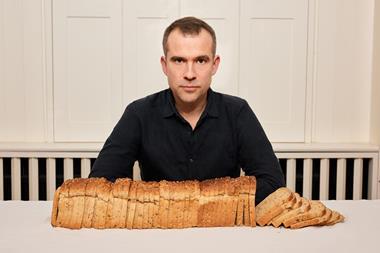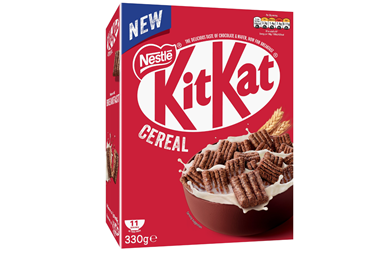The accusation from an 800-strong jury of parents set up by the Food Commission is set out by nutritionist Annie Seeley. "Children's foods are often low in essential nutrients but high in fat, salt and sugar and rely on artificial colourings and flavourings for their appeal to children," she says. "They are sold using manipulative marketing techniques which encourage children to pester parents into buying such foods."
Ouch! But the response from those manufacturers targeted by the pressure group has been equally strong.
"Parents recognise the importance of making food attractive and tasty for kids to eat," says Bob Fenton, Kraft Foods' communications manager, "and they choose to give their children Dairylea Lunchables as an occasional and fun treat."
He adds: "The fact that nearly four million families vote in the supermarket and buy Lunchables each year bears out our research."
Procter & Gamble is equally scathing, making the point that "the Food Commission's agenda is to be critical of a whole range of food products, particularly soft drinks".
It's not surprising that manufacturers have mounted such a robust defence, given that an important market is at stake here.
Currently, four billion lunchboxes are eaten every year in the UK and the lunchbox market is growing at 13.1% year-on-year, according to Taylor Nelson Sofres research for the 12 months to May 26. And much of the growth within the category is from prepared lunchbox products for children where Information Resources says relevant brands are now worth a total of almost £92m.
And the fact that busy mums hurrying to prepare a meal for their kids want the convenience of ready-wrapped foods helps explain why the average school lunchbox cost £1.25 in 2000, according to the Sodexho School Meal Survey, which compares favourably with the £1.54 spent on a cooked school meal.
The availability of ready-assembled products such as Dairylea Lunchables, supplemented by fruit, crisps, a drink and a cake or biscuit product, mean school lunchboxes are quite often not prepared at home at all.
All of which angers campaigners such as the Food Commission.
But the industry's defence is that such products are just part of the wide array of foods that can be packed in a kids' lunchbox.
Indeed, as the table on the previous page shows, many of the products that are included are similar to those today's parents had when they were children.
There's no doubting the fact that the five-a-day healthy eating message is increasingly getting through to consumers via the media and in-store promotions in multiples. Tesco, for instance, is in partnership with Cancer Research UK to educate its 16 million customers about fruit's role in cancer prevention, hoping to ensure that more parents add an apple or a mini pack of raisins to their child's lunchbox as well as their own.
The five-a-day message is also benefiting suppliers of dried fruit, according to Sundora. Joint md Julian Richards says data from Information Resources shows the market for snack fruit was up 31% to £14.5m in the year to February 24. "Our dried fruit snack packs are packaged in brightly coloured foil packs, so they don't look out of place in a school lunchbox where brands count as much as they do for trainers," says Richards.
Healthy eating is just as relevant to adults as it is to children with pre-prepared salads, in particular, growing in popularity. What is often forgotten in most debates about the lunchbox category is the importance of adults. While children under 16 eat a quarter of carried out foods, nearly half are eaten by working men.
So what kinds of foods are finding favour with adults needing a quick fix?
Fruit and salads aside, the chocolate-based products loved by kids are just as popular with their parents, as the Jaffa Cakes "full moon, half moon" campaign humorously sought to show.
The Cadbury Minirolls brand, the single biggest cake product in the market, is also being relaunched to appeal to both adults and children. "Cadbury Minirolls are the perfect ingredient for a lunchbox, as they are a portable, individually wrapped snack which appeals to both children and the child in me'," says Manor Bakeries category manager Hazel Cawthorne.
Biscuits and cakes find a place in most lunchboxes. Guilt over sweets and schools' opposition to them also makes biscuits and cakes more likely to find a place in children's rucksacks.
"Mums see biscuits as a guilt-free food," says Philippe Roucoule, category development manager at Burton's Foods. Paul Maylard-Mason, national accounts manager for The Fabulous Bakin' Boys, agrees: "Cake is perceived as a healthier alternative to chocolate and other savoury snacks. A large proportion of our customers buy our products because the ingredients don't read like a chemistry deck."
The key message? Consumers are concerned that their lunchbox contains healthy products, but they are just as keen to have something that is convenient to put together and, above all else, tasty.
{{FOCUS SPECIALS }}
Close menu
- Home
- Buying & Supplying
- Stores
- Channels
- Finance
- People
- Reports
- Events
- Jobs
- Subscribe now
Sign in to comment on this article
Not logged in before? Register for FREE guest access today.
You will be able to:
- Read more stories
- Receive daily newsletters
- Comment on stories
Advert









No comments yet